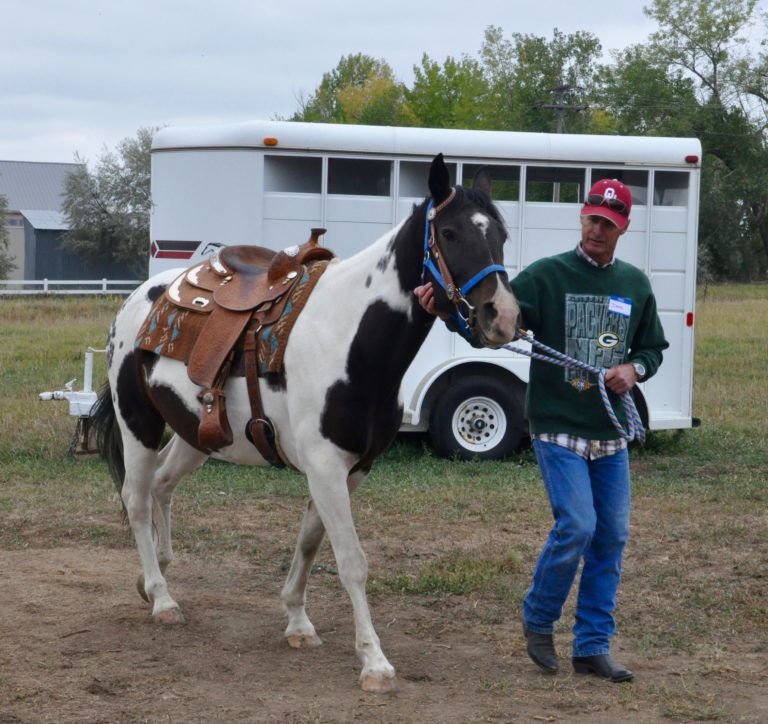FOR IMMEDIATE RELEASE
For more information, contact:
Kassi Hoxmeier
Bader Rutter
262-938-5522
Implement these safety best practices to help celebrate Independence Day with the greatest display of all – a safe, injury-free horse.
Independence Day brings out patriotism, family fun and more than 200 million pounds of fireworks, according to the American Pyrotechnics Association.
How does your horse react to fireworks?
In a recent horse owner survey, which examined the effects fireworks can have on horses, 99 percent of respondents indicated their horse exhibited fireworks-related anxiety – such as galloping, sweating, trembling and damaging fences – and 26 percent of horse owners reported their horse sustaining injuries due to such anxiety from fireworks. While multiple injuries were reported, the most common included cuts, sprains and broken limbs.
Maintain your horse’s health and safety. Before celebrating July Fourth, ask your veterinarian about prescribing a tube of Dormosedan Gel(detomidine hydrochloride) for your horse.
“Having tubes of the mild sedative on hand helps horse owners to take the edge off and treat minor injuries their horse might endure during fireworks displays and other exuberant festivities,” said Jeff Hall, DVM, senior equine technical services veterinarian, Zoetis. “Celebrate Independence Day with the greatest display of all – a safe, injury-free horse.”
Implement the following safety best practices:
- Administer Dormosedan Gel at least 40 minutes prior to the fireworks display for mild sedation lasting up to three hours. The mild sedative is available with a prescription from your veterinarian and helps restore safety and prevent injury. You can administer Dormosedan Gel from a single-dose syringe underneath your horse’s tongue – it’s an easy-to-use option for needle-shy horses and horse owners who are uncomfortable giving an injection. Watch how to administer Dormosedan Gel >
- Place your horse in a safe, familiar space such as his stall. Ensure you double check the area for sharp edges and any other material that could be harmful, should he become fractious. Remove access to food and water while your horse is sedated.
- Make sure your equine first-aid kit is fully stocked with all the must-have items.
- Keep a consistent watch, and check in on your horse often to ensure he is resting comfortably in his stall.
Work with your veterinarian for additional guidance on emergency care and first aid. For more information and resources, please visit DormGel.com.
IMPORTANT SAFETY INFORMATION
Do not use Dormosedan Gel in horses with pre-existing atrioventricular (AV) or sinoatrial (SA) block, with severe coronary insufficiency, cerebrovascular disease, respiratory disease, or chronic renal failure. Do not use in anesthetized or sedated horses, or in conditions of shock, severe debilitation or stress due to extreme heat, cold, fatigue or high altitude. Do not use in horses intended for human consumption. Handle gel-dosing syringes with caution to avoid direct exposure to skin, eyes or mouth. See full Prescribing Information.
About Zoetis
Zoetis is the leading animal health company, dedicated to supporting its customers and their businesses. Building on more than 65 years of experience in animal health, Zoetis discovers, develops, manufactures and commercializes medicines, vaccines and diagnostic products, which are complemented by biodevices, genetic tests and a range of services. Zoetis serves veterinarians, livestock producers and people who raise and care for farm and companion animals with sales of its products in more than 100 countries. In 2018, the company generated annual revenue of $5.8 billion with approximately 10,000 employees. For more information, visit www.zoetisus.com.
-30-
U.S. Fireworks Consumption Figures 2000 – 2015. http://www.americanpyro.com/assets/docs/FactsandFigures/fireworks%20consump.%20figures%202000-15.pdf. Accessed May 21, 2019.
The Management of Horses during Fireworks in New Zealand. https://www.ncbi.nlm.nih.gov/pmc/articles/PMC4810048/. Accessed May 21, 2019.
All trademarks are the property of Zoetis Services LLC or a related company or a licensor unless otherwise noted.
© 2019 Zoetis Services LLC. All rights reserved. GEQ-00322
AHP has not verified the factual statements in any message and AHP assumes no responsibility for the contents of, or any damage resulting from, any communication in the Newsgroup. Publication in the AHP Newsgroup is not an endorsement by the organization of any product, person, or policy. Complaints or concerns about the content of AHP Newsgroup postings should be directed to the originating individual or organization and not to AHP, which cannot resolve disputes arising between members. Complaints of copyright or trademark infringement may be addressed to the Executive Director.
Members may unsubscribe to the AHP Newsgroup at any time by sending an e-mail message to Chris at ahorsepubs@aol.com requesting to remove your e-mail address from the list. By doing this you will remove your name from receiving all future messages sent to the AHP-LIST until you contact us to re-subscribe.






